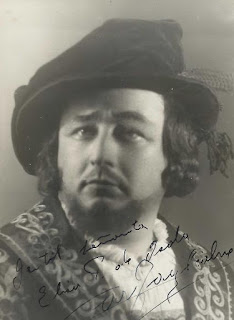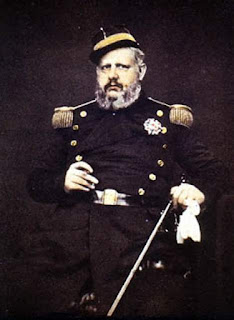Creative flair of Italian-born founder of famous fashion house
The prestigious fashion designer Nina Ricci was born Maria Nielli in Turin in 1883.
 |
| A Nina Ricci silk organza dress Photo: Mabalu (CC BY-SA 4.0) |
Her designs enabled her to build a reputation for graceful, feminine clothes. Ricci was a near-contemporary of Gabrielle "Coco" Chanel but in many ways they were polar opposites in that Ricci was neither a public personality nor a headline‐making designer.
Her interest in fashion began in childhood, when she began dressing her dolls. At the age of 13, having acquired the nickname Nina, she began working as a dressmaker’s apprentice.
She continued working in fashion, eventually joining the house of Raffin as a designer.
In 1904 she married an Italian jeweller named Luigi Ricci and they later had a son, Robert.
The house of Nina Ricci was founded in Paris in 1932. Nina became famous for her romantic, feminine, creations, which she created with the help of "live" models rather than mannequins. Her son, Robert, later joined her in the venture, helping her manage the business side. She was one of the first Paris designers to produce versions of her creations to sell through her boutique at prices that made them more accessible to ordinary women.
Robert created an in-house perfume division in 1941 and in 1948 the house of Nina Ricci launched the fragrance ‘L’air du temps’, in a glass bottle decorated with doves, which was co-designed by Marc Lalique. This became a world-wide success.
In the 1950s Nina Ricci stepped back from designing and her son continued to run the company with new designers.
Maria (Nina) Ricci died in Paris in 1970 at the age of 87.
More on fashion -- Gianni Versace, born 2 December, 1946.
 |
| Turin's Palazzo Reale Photo: Xadhoomx (CC BY-SA 3.0) |
Turin is the capital city of the region of Piedmont in the north of Italy. It has had a rich history linked with the Savoy Kings of Italy and there are many impressive Renaissance, baroque and rococo buildings in the centre of the city. Piazza Castello with the royal palace, royal library and Palazzo Madama, which used to house the Italian senate, is at the heart of royal Turin.
Travel tip:
Florence, capital of the Tuscany region and birthplace of the Renaissance, is a treasure trove of masterpieces of art and architecture. The beautiful Cathedral has a dome designed by Brunelleschi and a bell tower designed by Giotto. The Galleria dell’Accademia houses Michelangelo’s David and the Uffizi Gallery has works by Botticelli and da Vinci on display.
Home





